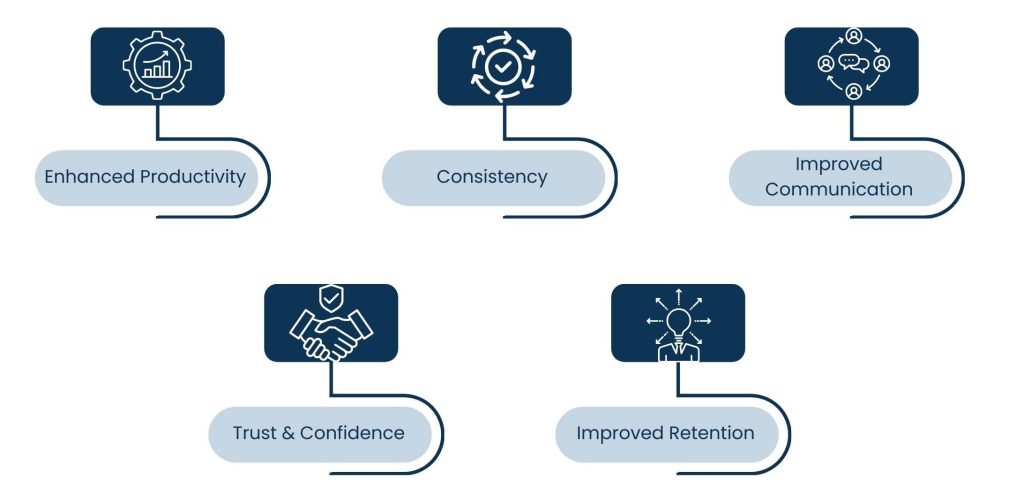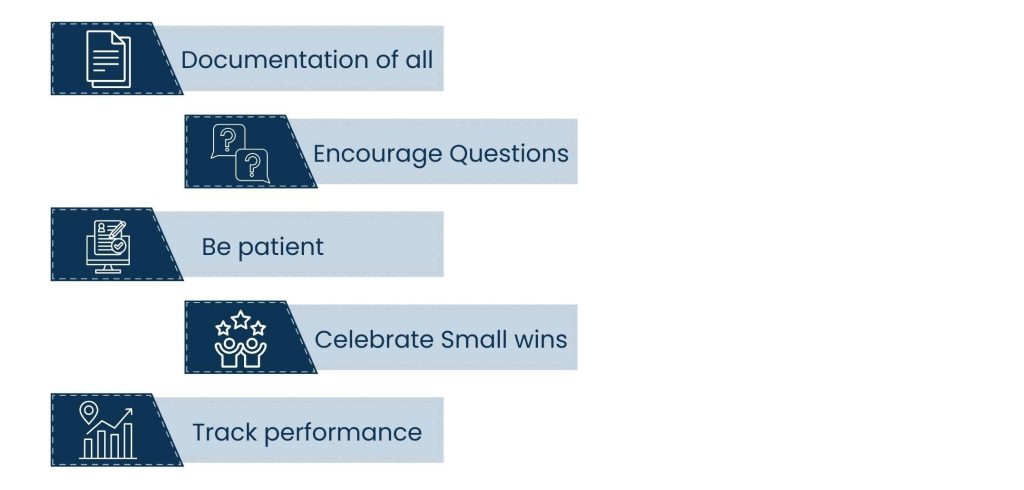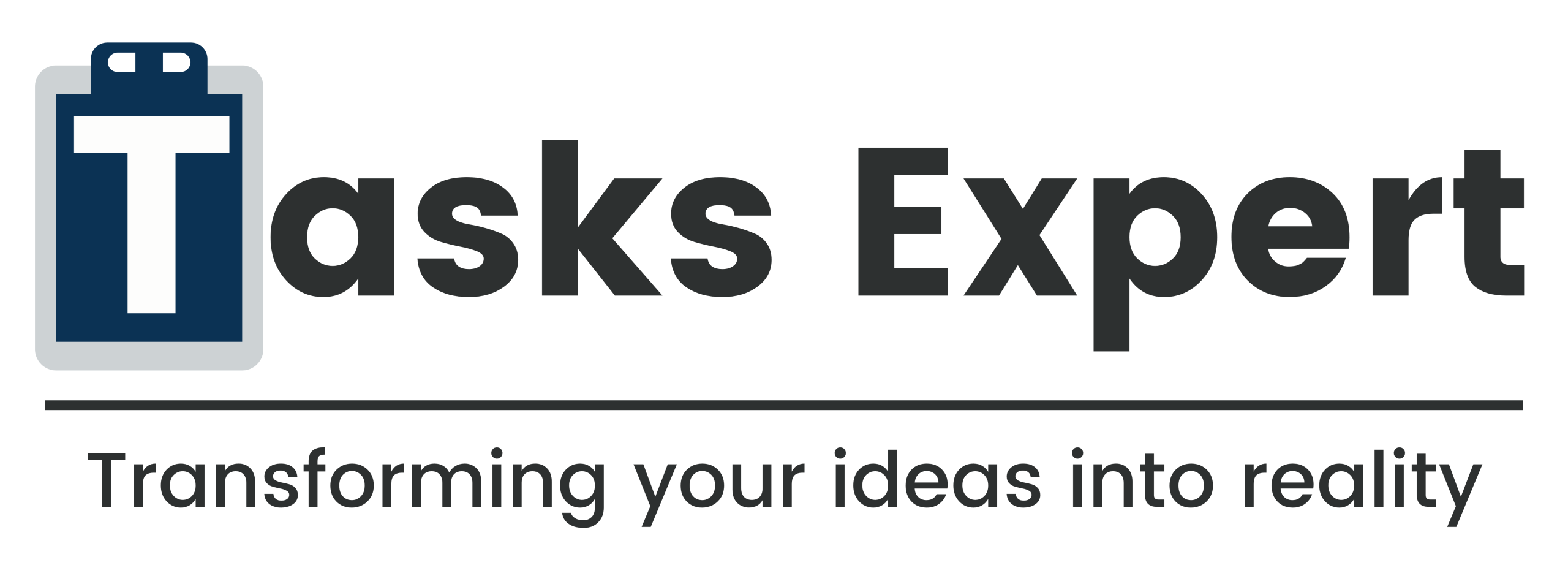Introduction
Hiring a virtual assistant (VA) is an exciting step for any business. But the real value isn’t in the hire — it’s in how well you onboard them. Onboarding is making your VA familiar with your business, systems, and expectations. Students catch up fast, make fewer mistakes, and lay the groundwork for future success by doing this.
Consider onboarding as the link between hiring and output. It is the missing component that causes inefficiency, rework, and unclear direction, leaving even the most qualified VA lost. With a solid onboarding process, your VA will get familiar with your goals, become vested in your workflow, and be productive for your business earlier.
Let’s read how proper onboarding transforms a VA into a reliable partner who not only executes tasks but also supports business growth.
Why Virtual Assistant Onboarding Matters?
Onboarding establishes your collaboration. Ignoring this step may cause problems in the future.

- Enhanced Productivity: Your VA can begin using the right procedure right away if the onboarding process goes smoothly.
- Consistency: Standardized processes increase accuracy and decrease errors.
- Improved Communication: Clear channels prevent misunderstandings.
- Trust & Confidence: Your VA understands they are appreciated and that their role matters.
- Improved Retention: A smooth beginning convinces your VA to stay longer.
To business owners, onboarding efficiently is equal to saving time on micromanaging and more time on expansion.
Also Read: Virtual Assistant Services in Ashdod
Steps to Successful Virtual Assistant Onboarding

1. Prepare Before Day One
- Successful onboarding starts before your VA even joins. Getting a head start saves the first week.
- Provide them with email, project management software, and other such resources. Set up pre-configured login credentials and access rights so your VA can start working right away.
- For routine jobs, create Standard Operating Procedures (SOPs): Your VA will have a predetermined strategy to follow if you document the steps involved in basic duties like scheduling, reporting, and data entry.
- Establish clear goals and describe your virtual assistant’s function in your company: Establish objectives and priorities so that your virtual assistant knows what success looks like right away.
Preparation is proof of professionalism and sets your Virtual Assistant up for success.
Discover how our Premium Virtual Personal Assistant plans streamline onboarding by pairing you with trained experts who quickly grasp the details.
2. Create a Welcome Package
The welcome package makes your VA feel part of your company day one. It’s not paperwork alone, it’s building comfort and clarity.
- Summary of mission and objectives of your company: Conveying your vision inspires your VA and provides some idea of how their work fits into the bigger picture.
- Team structure and introductions: Create central links so your VA knows who to contact for particular needs.
- Establish communication and reporting standards: Such as Slack messaging or weekly reports, to deliver updates.
- Platform and tool access guidelines: give login credentials, usage instructions, and direct links to prevent confusion later.
This step ensures your VA has everything in one place instead of constantly asking for clarifications.
3. Walk Through Workflows
- Don’t just delegate tasks: show them. Guiding through workflows produces clarity and confidence.
- How to answer customer questions: Show your Empower Your VA the tone, style, and procedure you want for client contacts.
- How to refresh your CRM: Show practical examples of how to log leads, refresh client details, or track sales stages.
- How to submit reports or update task boards: Define reporting formats and deadlines so your VA knows how and when to send updates.
This reduces the trial-and-error period and ensures your VA is aware of the context surrounding each task.
4. Get the Right Tools
Onboarding performs optimally with the right digital backbone. Collaboration becomes more organized and productive with the proper software.
- Task management: Allocate tasks, set deadlines, and track progress with tools such as Trello, Asana, and ClickUp rather than relying on infinite email chains.
- Communication: It’s easy to remain in contact with others using technology such as Zoom, Microsoft Teams, and Slack. You can quickly check in or confirm assignments in real time with video calls and instant messaging.
- File Sharing: Microsoft 365, Dropbox, and Google Workspace provide secure and convenient ways of sharing files, ensuring everyone can access the documents they need.
- Finance & Invoicing: Through automated bookkeeping and billing functions and reducing errors, applications like FreshBooks and QuickBooks assist in keeping organized accounting records.
Customize onboarding to businesses from different sectors so that your VA learns the tools most relevant to your sector.
5. Set Clear Milestones
Overwhelming a new VA with too much all at once can be confusing. Milestones segment the process step by step and make it measurable.
- Week 1: Orientation and simple tasks: Introductions, account creation, and executing simple tasks like sorting mail or calendar management.
- Week 2: Independent management of routine processes: Your VA should be comfortable executing routine tasks with minimal supervision by this time.
- Week 3–4: Higher-value tasks: Having acquired workflows, your VA can execute more advanced tasks like customer support management or campaigns.
This growth builds confidence and ensures steady progress without overloading your VA.
6. Establish Feedback Loops
Feedback works as a roadmap to successful planning and execution. Without it, small issues become major issues.
- Progress updates, daily or weekly: Short summaries keep you informed of work finished and problems faced.
- Review calls to answer questions: Regular calls leave space for dispelling uncertainties and reinforcing understanding.
- Positive feedback for improvement: Mention where your VA excels and give suggestions on improving.
This creates a transparent communication culture and empowers your VA rather than micromanaging.
Best Practices for Virtual Assistant Onboarding
Even when processes are clearly defined, following best practices makes the process more efficient and sets the stage for long-term success.

Here are some methods of enhancing the onboarding process:
- Documentation of all: once your SOPs have been made, your VA will refer to them as a reference. You will save time and be accurate by having them reference planning and not doing the same thing over.
- Encourage Questions: Keep an open setting where your VA does not hesitate to ask questions. It instills a trusting relationship and avoids mistakes.
- Be patient: Acquiring new processes and systems takes time. Let mistakes in the initial weeks happen, with emphasis on training your VA and not demanding excellence from day one.
- Celebrate Small wins: Reward small wins, however small, to encourage your VA and encourage desired behavior. Even a casual “well done” can really make a difference.
- Track performance: Track performance using dashboards, reports, or check-ins. This allows you to monitor progress, reward success, and get your VA back on track with your business objectives.
These routines turn onboarding into a cyclic process rather than a single configuration that enhances cooperation and enables your VA to fit in with your team.
Also Read: Virtual Assistant Services in Saint Helier
Long-Term Benefits of Effective VA Onboarding
Onboarding is not merely about those initial weeks. Done correctly, it lays the foundation that continues to deliver value months and even years down the line. A good process guarantees your virtual assistant is not only a task-doer, they are an extension of your business.

- Enhanced Efficiency: Once correctly onboarded, your VA will no longer require constant supervision and reminders. They can work, allowing you to focus on high-impact projects such as strategy or client acquisition. You save a ton of time by switching from micromanaging to trust.
- Less Stress: Without an onboarding process, business owners fall into the re-explain or backpedal trap. With onboarding, you get it right the first time, eliminating stress and allowing you to have the confidence that operations are in hand.
- Scalable Support: As your business grows, a well-onboarded virtual assistant can simply accept additional responsibilities with ease. Rather than re-teaching every time with new employees, your current VA adapts alongside your business, growing with your expansion.
- Trusted Partnership: An onboarded virtual assistant learns to satisfy your needs, understands your preferred mode of operation, and commits to your business’s objectives. They consequently establish themselves as a reliable team player who contributes, exchanges ideas, and assists in decision-making.
There are many advantages to considering onboarding as a long-term investment as opposed to a short-term requirement. Your VA is more productive, your business has a devoted partner that expands with you, and your processes function more smoothly.
Conclusion
A careful onboarding process for virtual assistants is the cornerstone of a lasting collaboration. It ensures smooth information exchange, improved efficiency, and fluid cooperation. Using the right technologies and setting clear expectations, you can set up your VA for success by planning.
Tasks Expert helps businesses onboard capable VAs promptly and effectively, integrating them into your team.
Frequently Asked Questions
Onboarding usually lasts two to four weeks, depending on the assignment specifics and the VA’s background.
In fact. SOPs reduce the necessity of having to give repeated instructions and minimize onboarding time.
It is easier to integrate a virtual assistant when you have access to online communication platforms like Slack and Zoom, project management platforms like Asana and Trello, and file-sharing platforms like Google Workspace and OneDrive.
Most onboarding takes place virtually via phone calls, recorded videos, and document exchanges.
Not having clear expectations. Without clear roles, VAs spend time making an educated guess about how to do things.
About Us
Tasks Expert offers top-tier virtual assistant services from highly skilled professionals based in India. Our VAs handle a wide range of tasks, from part time personal assistant to specialized services like remote it support services, professional bookkeeping service etc. Furthermore, it helps businesses worldwide streamline operations and boost productivity.
Ready to elevate your business? Book a Call and let Tasks Expert take care of the rest.









